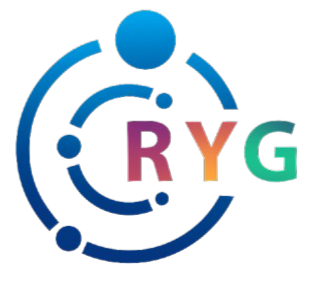In the dynamic world of interactive media, visual cues serve as vital tools that guide players through complex game environments, communicate game states, and enhance overall engagement. These cues are not mere decorations; they are carefully crafted signals that reveal the underlying variability within a game, shaping how players perceive and respond to different scenarios.
This article explores the fundamental role of visual cues in game design, illustrating how they effectively convey variability through concrete examples and practical insights. Understanding these mechanisms enables designers to craft more immersive and responsive gaming experiences.
Table of Contents
- Fundamental Concepts of Visual Cues and Variability
- Psychological Foundations of Visual Perception in Gaming
- Techniques for Using Visual Cues to Indicate Variability
- Case Study: Modern Slot Games and Visual Cues
- Beyond Slots: Visual Cues in Broader Game Genres
- Design Principles for Effective Use of Visual Cues
- Non-Obvious Aspects and Deeper Insights
- Challenges and Ethical Considerations
- Conclusion
Fundamental Concepts of Visual Cues and Variability
Visual cues are signals embedded within a game’s visual environment that communicate specific information about game states or upcoming events. They are essential for conveying variability—the range of possible outcomes or changes that can occur during gameplay. These cues can be as explicit as flashing symbols or as implicit as the arrangement of objects that suggest potential rewards or risks.
The role of color, shape, and motion is central in signaling variability. For instance, bright, contrasting colors often denote rare or significant events, while smooth animations can indicate active or changing states. Differentiating between explicit cues (direct signals like flashing icons) and implicit cues (subtle visual grouping) allows players to interpret game states intuitively, enhancing engagement and decision-making.
Psychological Foundations of Visual Perception in Gaming
Human visual processing is inherently adept at pattern recognition, enabling players to quickly identify cues that signal variability. This capacity is rooted in cognitive biases—mental shortcuts that simplify complex decisions. For example, players tend to associate larger, more colorful symbols with higher rewards, a bias exploited by game designers to communicate the potential for bigger wins.
Visual cues influence player expectations and behaviors by creating mental models of what might occur next. Consistent cues build trust, while unexpected signals can pique curiosity or induce excitement, maintaining player interest over time. Recognizing these psychological effects is key to designing cues that are both effective and ethical.
Techniques for Using Visual Cues to Indicate Variability
Designers employ various techniques to visually signal variability. Contrast and highlight are used to draw attention to rare or special events, such as a glowing symbol indicating a jackpot. Dynamic animations emphasize changes, like spinning reels or flashing icons, reinforcing the perception of variability. Proper spatial arrangement—grouping related symbols or clustering potential outcomes—guides player focus and hints at possible results.
| Technique | Purpose | Example |
|---|---|---|
| Contrast & Highlight | Indicate special or rare events | Bright borders around a winning symbol |
| Dynamic Animations | Emphasize ongoing changes | Spinning reels or flashing icons |
| Spatial Arrangement | Suggest potential outcomes | Grouping symbols that form a winning line |
Case Study: Modern Slot Games and Visual Cues — Focus on this game is the dog’s bollocks
Modern slot games exemplify the sophisticated use of visual cues to communicate variability. Sweet Bonanza Super Scatter introduces enhanced visual signals over its predecessor, utilizing vibrant animations, special scatter symbols, and dynamic highlighting to cue players about potential wins and bonus features. For instance, when a player lands a specific combination of scatter symbols, they are greeted with animated effects—such as sparkling or bouncing icons—that clearly differentiate standard spins from high-reward scenarios. Such visual cues help players intuitively grasp the different layers of game variability, making the experience more engaging and transparent.
These visual signals are carefully designed to be both eye-catching and informative, ensuring players recognize special features without confusion. The animations used in this game is the dog’s bollocks serve as a modern illustration of how visual cues can effectively communicate game variability, elevating player satisfaction and trust in the game’s fairness.
Beyond Slots: Visual Cues in Broader Game Genres
Visual cues are not limited to slot machines. Puzzle games, adventure titles, and strategy games also rely heavily on visual signals to indicate variability. For example, in puzzle games, color-coded tiles or animated effects signal potential matches or power-ups, guiding players toward strategic decisions. Adventure games might use lighting and environmental cues to hint at hidden pathways or upcoming threats, while strategy games leverage iconography and spatial cues to show control zones or resource availability.
Comparing static visual cues—such as icons or symbols—to dynamic cues like animations reveals a spectrum of engagement strategies across genres. Static cues are less intrusive but may require player interpretation, whereas dynamic cues actively draw attention and convey immediate changes. Lessons from non-gaming contexts, including Western cultural influences—such as the iconic banana symbol from the late 19th century—highlight how visual iconography evolves and influences perception over time, enriching game design with layered symbolism.
Design Principles for Effective Use of Visual Cues to Show Variability
To maximize clarity and engagement, visual cues must adhere to core design principles:
- Consistency and clarity: Use uniform visual language to prevent players from becoming confused by conflicting signals.
- Balance subtlety and prominence: Ensure cues are noticeable without overwhelming the player or cluttering the interface.
- Accessibility and inclusivity: Incorporate color-blind friendly palettes and clear symbols to accommodate diverse audiences.
Non-Obvious Aspects and Deeper Insights
The psychological impact of unexpected visual cues can sustain interest and excitement, preventing predictability from dulling player engagement. When players encounter surprising signals—such as an unanticipated animation or icon—they are more likely to remain attentive and invested in the game’s outcomes.
Cultural and historical factors also influence visual iconography. Symbols like the banana, once a cultural icon in Western societies, demonstrate how visual signals evolve and can carry layered meanings across contexts. Incorporating such nuances enriches game narratives and emotional responses, fostering deeper player connections.
Challenges and Ethical Considerations in Visual Cue Design
While visual cues enhance engagement, designers must avoid misleading signals that could lead to player frustration or exacerbate gambling addiction. Ethical considerations include transparency about odds and ensuring cues do not manipulate players into excessive betting behavior. Promoting responsible gaming involves designing cues that inform rather than deceive, fostering trust and long-term player retention.
Conclusion: Integrating Visual Cues Thoughtfully to Enhance Variability Perception
Effective game design leverages visual cues to communicate the variability inherent in gameplay, making complex systems comprehensible and engaging. As demonstrated by modern slot games like this game is the dog’s bollocks, and other genres, well-crafted signals foster transparency and excitement. The evolving role of visual cues—balancing clarity with surprise—continues to shape the future of interactive entertainment, emphasizing the importance of thoughtful, ethical design in creating captivating player experiences.



Leave a Reply